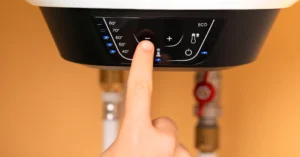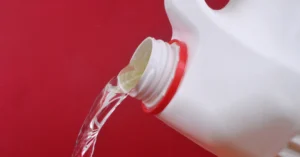Ever found yourself with a sink that drains slower than a snail on a rainy day? That’s never a fun moment, especially if company’s coming over. Welcome to this friendly guide about drain cleaning for San Diego County homeowners. Whether you’re dealing with a minor clog or a deeper plumbing emergency, you’ll learn how to handle the basics yourself, when to call in the pros, and how to keep your drains flowing for the long haul. Let’s get started.
Understand how your drains work
Drains might seem simple, but they’re actually part of a carefully designed system that moves waste and gray water (like leftover dishwater) away from your home. Each sink, shower, or toilet connects to a network of pipes, all leading out to a main sewer line or septic system.
A quick look at your drainage system:
- The drain trap (the U-shaped pipe under your sink) holds water to prevent sewer gases from backing up
- Vent pipes help air flow through the system, so water drains smoothly without gurgling
- Mineral buildup and debris can reduce that open space inside the pipes, making water flow less efficient
Keeping this flow unrestricted is your main goal. Gravity does the heavy lifting, but grease, soap scum, hair, and food scraps can cling to the insides of pipes until they cause blockages. Understanding your drainage anatomy helps you spot problems before they escalate, so you can jump into action early.
Why clogs happen
Small particles may sneak by each day. Over weeks or months, these can combine with fats or limescale deposits in your pipes. Eventually, you notice your sink draining slowly… or not at all. In San Diego’s climate, kitchen drains often face extra grease buildup from cooking oils that cool down and solidify inside your pipes. Combine that with the natural hardness of local water (packed with minerals) and you have a recipe for stubborn clogs.
The good news? You can solve or prevent many of these issues with some simple know-how. For more insights on what actually works, check out our comprehensive test of popular drain cleaning hacks in Southern California homes.
Tackle everyday clogs
Not every clog needs a professional solution. If you’ve got a sink or tub that’s draining slower than usual, testing a few do-it-yourself methods often fixes the problem without too much fuss. You just have to be careful about what you put down the drain—and how you approach unclogging it.
Simple DIY methods
Plunge away: A plunger is your first line of defense for many clogs. For sinks, block the overflow hole or the second drain (in a double sink) to keep the pressure focused on the clog. Give it steady, swift plunges for about 30 seconds, then check if the water drains more freely.
Hot water flush: Boil a kettle of water and slowly pour it down the drain in stages. Wait a few seconds between each pour. This helps dissolve grease or buildup, especially in kitchen drains.
Natural solutions: A combination of baking soda and white vinegar, left to fizz for around 15 minutes, can loosen mild clogs. Follow it up with hot water. The American Cleaning Institute provides helpful drain maintenance tips for homeowners.
Over-the-counter drain cleaners
Commercial drain cleaners might look like a quick fix, but they often use harsh chemicals that can damage older or fragile pipes. In moderation, they’re a convenient shortcut. However, if you find yourself using them regularly, it may signal a deeper problem that demands a more robust approach—often professional intervention. The EPA offers guidance on safer cleaning alternatives for your home.
Know when to call professionals
Sometimes, a clog is more than just a blob of grease or hair. It could be rooted in aging pipes, tree-root intrusion (particularly if you live in a suburban neighborhood with mature landscaping in areas like La Mesa 91942 or Chula Vista 91910), or pipe damage from shifting ground. The longer you wait to address big problems, the more you might risk unwanted plumbing emergencies.
Warning signs to catch early:
- Water backing up in multiple fixtures at once, like the toilet and sink
- Gurgling noises or foul odors coming from your drains
- A toilet that frequently overflows or struggles to flush
- Persistent slow drainage, even after you’ve tried DIY fixes
If you notice any of these symptoms, don’t stay on the fence. Drum up the courage to call a professional plumber. They’ll have specialized tools, training, and a keen eye for spotting hidden trouble spots. You might dodge extensive (and expensive) damage down the road. Learn more about the hidden dangers of ignoring slow drains in your Southern California home.
Potential cost of delay
Neglecting a major drain clog could lead to flooding, burst pipes, or contamination from sewage backup. A single burst pipe can soak carpet, ruin drywall, and even affect your home’s electrical system if water seeps too far. Between the cleanup, repairs, and restoration, delaying professional care can end up costing you more time and money than calling a pro at the first sign of trouble. Our guide on preventative maintenance vs emergency repairs shows exactly how much you can save.
Ultimately, if you sense the problem is deeper than a typical DIY approach can handle, remember that professional plumbing maintenance is a smart long-term move. This is especially true if you have older pipes prone to cracks or corrosion. An expert can fix the immediate issue and help you plan future maintenance to avoid repeat calamities. Professional camera line inspection can pinpoint exactly where problems lurk in your pipes.
Dive into hydro jetting
You might have heard of snaking a drain, where a motorized auger cuts through blockages. That’s helpful in many cases. But if you’re dealing with years of built-up grease, hard water deposits, or major tree-root infiltration, hydro jetting is your plumbing superhero.
What it is
Hydro jetting involves blasting highly pressurized water (up to thousands of pounds per square inch) through your pipes. Think of it like a power washer for your plumbing system. With that level of pressure, the jet dislodges stubborn debris, flushes out grease, and even cuts through small tree roots that have wriggled their way into your lines.
Unlike some other methods, hydro jetting cleans the entire diameter of the pipe, not just poking a hole through the clog. This means your drains are left nearly as clear as they were after installation. Because of that, many professional plumbers consider hydro jetting the gold standard for thorough drain cleaning. The Plumbing-Heating-Cooling Contractors Association provides technical information on hydro jetting for those interested in learning more.
When you need it
You might want to consider hydro jetting if:
- You’ve had multiple clogs in the same drain in a short period
- Your drains show persistent signs of buildup, like slow draining or frequent backups
- A sewer line inspection found root intrusion or significant sludge
Keep in mind, older or severely damaged pipes might not handle the intense water pressure hydro jetting requires, so a plumber will likely inspect your lines first with a camera to confirm that it’s safe to proceed. If your pipes are in good shape, hydro jetting can be a long-term solution that saves you from repeated drain troubles.
Manage San Diego water hardness
San Diego is known for its gorgeous beaches, warm sunshine, and, unfortunately, relatively hard water. Hard water means it has a high mineral content, including calcium and magnesium. While these minerals aren’t harmful for drinking, they can do a number on your plumbing.
Why it’s relevant
Mineral-rich water leaves behind deposits, often referred to as limescale. Inside your drainpipes, these deposits gradually narrow the flow path, making them more prone to clogs. Limescale can also build up in appliances like washing machines, dishwashers, and water heaters, reducing their efficiency and lifespan. If you’re noticing crusty white buildup on faucets, shower heads, or even around drain openings in areas like Point Loma (92106) or Oceanside (92054), that’s a telltale sign of limescale.
Long-term prevention tips:
- Soften your water: Consider installing a water softener or a water treatment system. These can reduce the minerals flowing through your plumbing
- Routine cleaning: Regularly flush drains with hot water, or use baking soda and vinegar to keep minerals from accumulating in the first place
- Professional descaling: Plumbers offer services to descale water heaters and pipes, especially if you have an older system that’s never been maintained for hardness
The Water Quality Association offers information on water hardness and treatment options for homeowners.
Addressing water hardness helps your pipes and fixtures last longer, which in turn saves you from frequent plumbing repair costs. You’ll also enjoy better water pressure, fewer water stains, and better overall drain health.
Prevent future plumbing emergencies
Whether you’re a brand-new homeowner or you’ve lived in your San Diego neighborhood for decades, the best way to avoid major drain catastrophes is through consistent, proactive habits. After all, dealing with an overflowing toilet at 2:00 a.m. is not something you’d like to repeat—or experience at all.
Routine checks
Inspect for leaks: Make it a habit to glance under your sinks or around your washing machine hose connections once a month. Leaks are easier (and cheaper) to fix when you catch them early, before they have a chance to damage cabinets or floors. Our emergency guide on steps to take when you discover a leak can help you respond quickly.
Clean stoppers and strainers: Hair and soap scum can quickly clog bathtub and sink drains. Remove and rinse the stoppers every week or two. For shower drains, use a strainer to catch hair, then empty it into the trash before it washes down the pipe.
Watch what goes down the kitchen sink: Grease is a top culprit in clogs. Instead of pouring cooking oil or leftover grease down the drain, let it cool, then throw it in the trash (or a sealed container). For commercial properties, proper grease trap maintenance is essential.
Scheduling professional maintenance
While a quick DIY fix can handle minor clogs, it’s wise to have an annual or semi-annual plumbing checkup. During these visits, a professional might:
- Clear out any developing blockages before they turn into a full-blown emergency
- Inspect for early signs of corrosion or root intrusion
- Recommend any upgrades or adjustments, like installing a water softener or adjusting water pressure
This is especially valuable for older homes in neighborhoods like Coronado (92118), which may have dated pipes more prone to cracks or corrosion. Regular maintenance can extend your system’s life, saving you from big repair bills and those frantic emergency phone calls. Consider The Solid Care Plan for just $144/year – it includes regular maintenance that prevents costly emergencies.
For more comprehensive guidance, check out our year-round plumbing maintenance practices specifically designed for Southern California homes.
When major repairs are needed, modern techniques like pipelining and repiping can restore your drainage system with minimal disruption. For properties requiring excavation work, professional plumbing excavation services ensure the job is done safely and efficiently.
Wrap it up
You’ve learned all the essentials by walking through this ultimate guide, from basic plunging techniques to the power of hydro jetting. You now know how to spot the difference between a quick DIY job and a situation that calls for a pro. You also understand the impact of mineral-heavy San Diego water on your pipes, which is crucial for keeping those drains running free.
For complex issues requiring specialized attention, professional backflow prevention services protect your water system from contamination. And if you’re considering major upgrades, learn about trenchless vs traditional sewer line replacement to make the best decision for your San Diego home.
Keep Your Drains Flowing – Get Expert Help When You Need It
Don’t let drain problems disrupt your daily routine or turn into costly emergencies. Whether you’re dealing with slow drains in Chula Vista, persistent clogs in Point Loma, or need professional hydro jetting services anywhere in San Diego County, Solid Plumbing & Drains has the expertise and equipment to get your drains flowing like new.
Ready for professional drain cleaning services? Contact Solid Plumbing & Drains today or call 619-305-1722 for fast, reliable drain cleaning throughout San Diego County.




